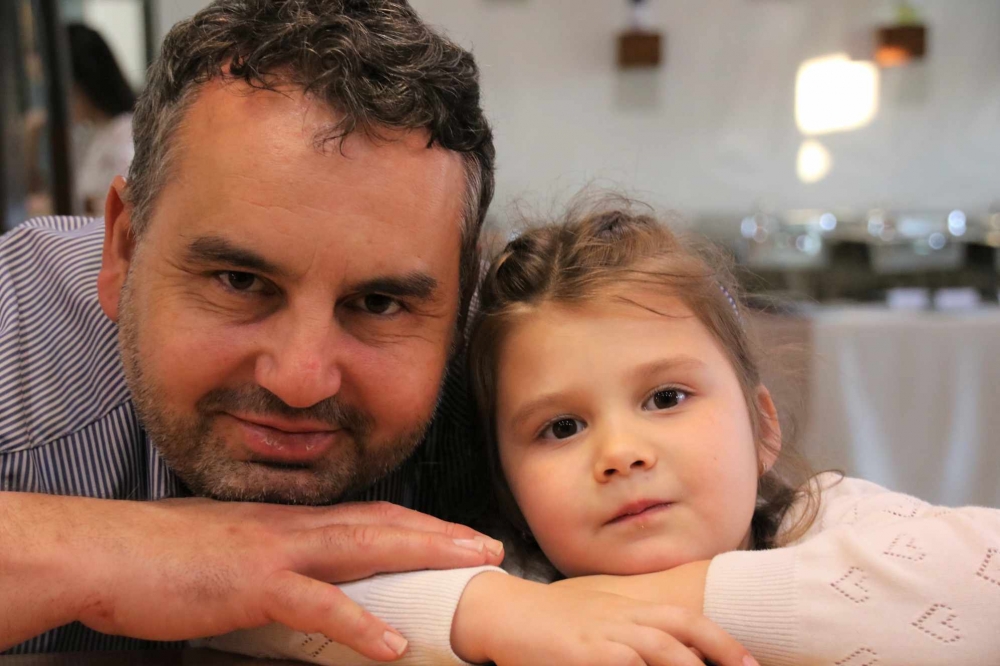To Create Something Durable on the Fields of Kunság
2022.06.08.
As he is ready to admit, Szabolcs Lantos started winemaking with a little handicap, since he founded his winery in the Kunság wine district instead of a well-known worldwide place or a tourist hot spot.
That said, he still deems himself lucky, as Soltvadkert has 5-6 more wineries, including the famous Frittmann winery, and the proximity of Lake Vadkert attracts people thirsty for wine. Of course, not only the thirsty ones – that’s why Szabolcs and his partner operate a food truck by the name SHOW & BORs at the lake, which also pops up in the yard of Lantos Winehouse time and again to offer something to eat along with the wines. The idea is working, as Lantos & Co. is open for business from Tuesday to Saturday between 9 AM and 8 PM. As Szabolcs says, his aim is that his son, starting his university studies as a grape producer and winemaker this year, will find it easier to follow in his footsteps, and in this way, the winery operated by him and his wife will be transformed into a real Family Winery.
You’re a first-generation winemaker, am I right?
This is only partly true, as my grandfather also made wine, with the method and tools that everyone used at that time. Today we have loads of new technology at our disposal, so we can eliminate a few sources of error. However, I was indeed the first in my family to make bottled wine: I operate this enterprise together with my wife.
What changed in you, compared to your grandfather? Do you still remember why you started this?
I remember clearly how we didn’t like to go out to the vineyard. I also remember clearly that when all five of us – including my two siblings – went out in the morning, and one of us asked at 7 AM when we would finally go home, my dear father was quite mad at us.
How did you turn towards winemaking despite all that?
The reason why I became a winemaker or why we started to do this lies elsewhere. I have always been fascinated by the production of red wine. I also sent a few batches to local wine competitions and got a few bits of success from the very start. Quite a few of our wines received a golden medal, not only our variation wines but also cuvées, and this nudged us to proceed. In the middle of the 2000s, I felt that there were more opportunities here than to merely grow grapes and make unbottled wines for sale to a larger winery. Another significant milestone in my life was when my wife took me to Villány to celebrate my birthday, where I was amazed not only by the wines but also by the hospitality: they have been doing it for a very long and at a very high level. In my opinion, the cradle of professional hospitality has always been in Villány, and the other wine districts have also caught up nicely by now. I found this really inspiring – but we don’t even have to go this far, since I could also mention the Frittmann Borászat winery. So the idea slowly took shape that we, too, should enter the hospitality segment and make quality wines for that purpose.
What grape varieties do you work with?
Our repertoire is quite broad. When I replanted the family estate and the newly bought plots, our principle was to use the varieties that are most characteristic of the land: Ezerjó, Kövidinka, Kadarka, and also Irsai Olivér, Cserszegi Fűszeres and Kékfrankos. I fell in love with French varieties in other wine districts, so we also have Cabernet Franc, Sauvignon and Merlot. And perhaps that’s enough – although I have a few more varieties in mind... but you can’t do all of them.
What do you think your unique characteristics are here in the wine district?
Everyone of the local winemakers of Soltvadkert has a very own wine that is different from the common set. Also, despite that several of us do Kövidinka, each one is slightly different from the others. However, my absolute signature is red wine: I have as many red wines as white ones, including a few fuller wines, which is quite unusual in this wine district. Our red wines performed excellently at the most prestigious international wine competitions, including last time at the Grand Prix Vinex 2022 wine competition in the Czech Republic: our Merlot 2018 received a gold medal, our Kékfrankos 2018 a grand gold medal and the title of national winner.
What should we know about these?
I make rich but fruity, easy-to-consume red wines – this style is my philosophy, and I strive to serve this purpose through my winemaking activity. I can regulate this by means of the production itself, by wine district yield restriction, pushing the time of harvest to the extremes, and fermentation. Also, I consider it very important that red wines should not spend more than 10-12 months in barrels.
Many say that you can’t produce good grapes on the sand. Is there a Kunság terroir that determines its wines?
As to the region, it’s widely known that all the fruit from the Great Hungarian Plain is really tasty and delicious, including grapes. We have many hours of sunshine and varied soil. There is generally a loess, clay and saline subsoil, while the topsoil often appears sandy. Kövidinka, one of my most important varieties, received aromatic descriptions mentioning a “mineral” trait at several wine competitions. We can also sense it. The reason is the saline subsoil, from which the grapes can pick up this mineral trait. Several studies have been published lately, challenging the idea that wines gain their mineral character from the soil. I don’t want to take sides in this debate, but I can say that it is present in our wines as well.








